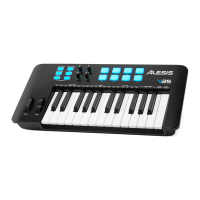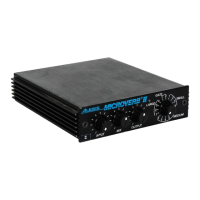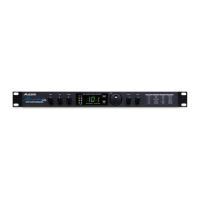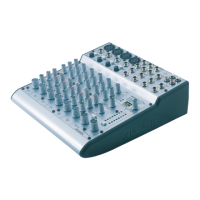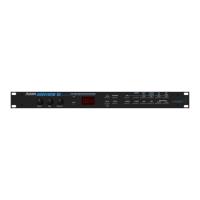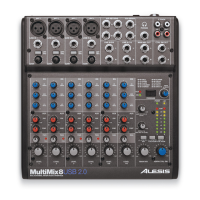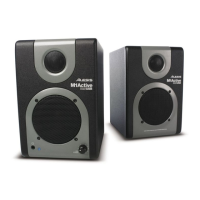Chapter 6
ALESIS ML-9600 REFERENCE MANUAL 37
NOTE: If a playlist is composed entirely of 44.1Hz/16-bit audio, with no DSP (including Track fades)
applied other than Track gain, the CD creation process will bypass the rendering stage.
Once the CD creation process is complete, the rendered image remains on the hard disk, and can be
used for subsequent CD burns without re-rendering. The rendered CD "image" can be accessed via
Playlist Select mode; pressing PLAYLIST SELECT and using the UP/YES button to scroll through the
sixteen playlists will bring you to the "seventeenth" playlist, labeled "Rendered Image". This rendered
playlist is not editable, but can be auditioned like a regular playlist in Playlist Select mode. Additional
CDs of the rendered image can be created by selecting the rendered image playlist, and then pressing
the CREATE CD button.
Once the playlist has been completely rendered, the CD creation process begins automatically.
6.3B INITIALIZING
The initializing stage is where the CD drive begins the process of recording, does self-calibration, and
processes the Table Of Contents information from the playlist. This initialization process takes about
one minute to complete.
6.3C RECORDING
After initializing, the unit begins the process of recording actual audio samples on the disc. This is
indicated in the display by the "In Progress" message. The time counter will still function normally
during the CD creation process, so it is possible to view elapsed or remaining track time either for a
single Track or for the entire disc. In addition, the Track Number indicator will indicate the current
Track being recorded to the CD.
Some Notes About CD Recording Speed:
You may have heard of a CD-ROM or CD-R drive described as a "2X" or "8X" or "24X" speed; some
discussion is necessary to avoid confusion over these speed descriptions.
The speed number (1X, etc.) is a description of how quickly the CD drive can either read data from
the disc, or how fast it will write data to the disc; sometimes the speeds are specified separately (12X
read/4Xwrite, for example) in the case of CD-R drives. "1X" means 153,600 bytes per second, the
speed at which CD-ROM drives were originally designed. Because CD-ROM technology is an
offshoot of CD-Audio technology, this number is the rate at which data can be read from a CD-ROM
spinning at the same speed as a Red Book CD playing in real time, or 1X. "2X", therefore, is 307,200
bytes per second, "4X" is 614,400 bytes per second, and "8X" equates to 1,228,800 bytes per second. In
the case of Red Book recording or playback, these data rates are slightly higher, due to less error
correction data overhead.
The MasterLink records Red Book CDs at "4X" speed, which simply means that a full Red Book CD
can be recorded (after rendering, if necessary) in ¼ of the play time, or about 19 minutes. Less full
discs take correspondingly less time to record.
CD24 discs are CD-ROM discs, so the data rates listed above apply. 44.1kHz/16-bit stereo audio has a
play speed data rate of 176,400 bytes per second, and because CD24 discs are recorded at a "2X", or
307,200 bytes per second rate, the audio will be recorded to the CD at about 1.75 times play speed (a
five-minute song will be recorded to the CD in about 2 minutes, 51 seconds). This can be observed by
watching the track time counter during the CD recording process; the counter will increment faster
than real time, because the counter is based upon the number of samples processed.
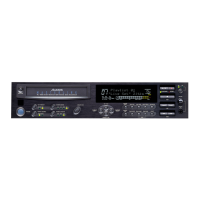
